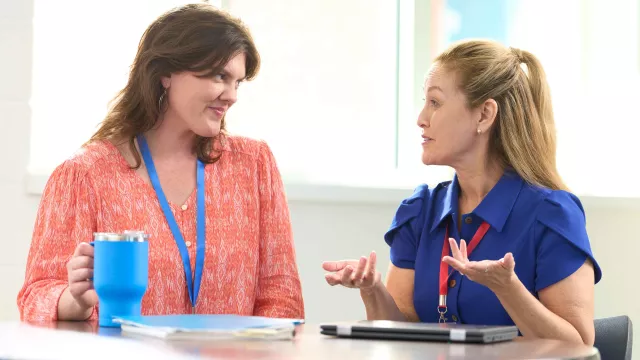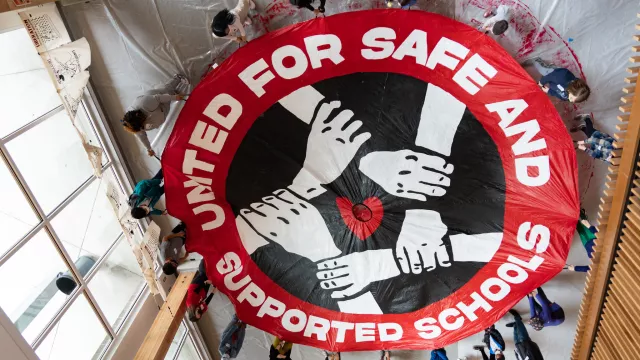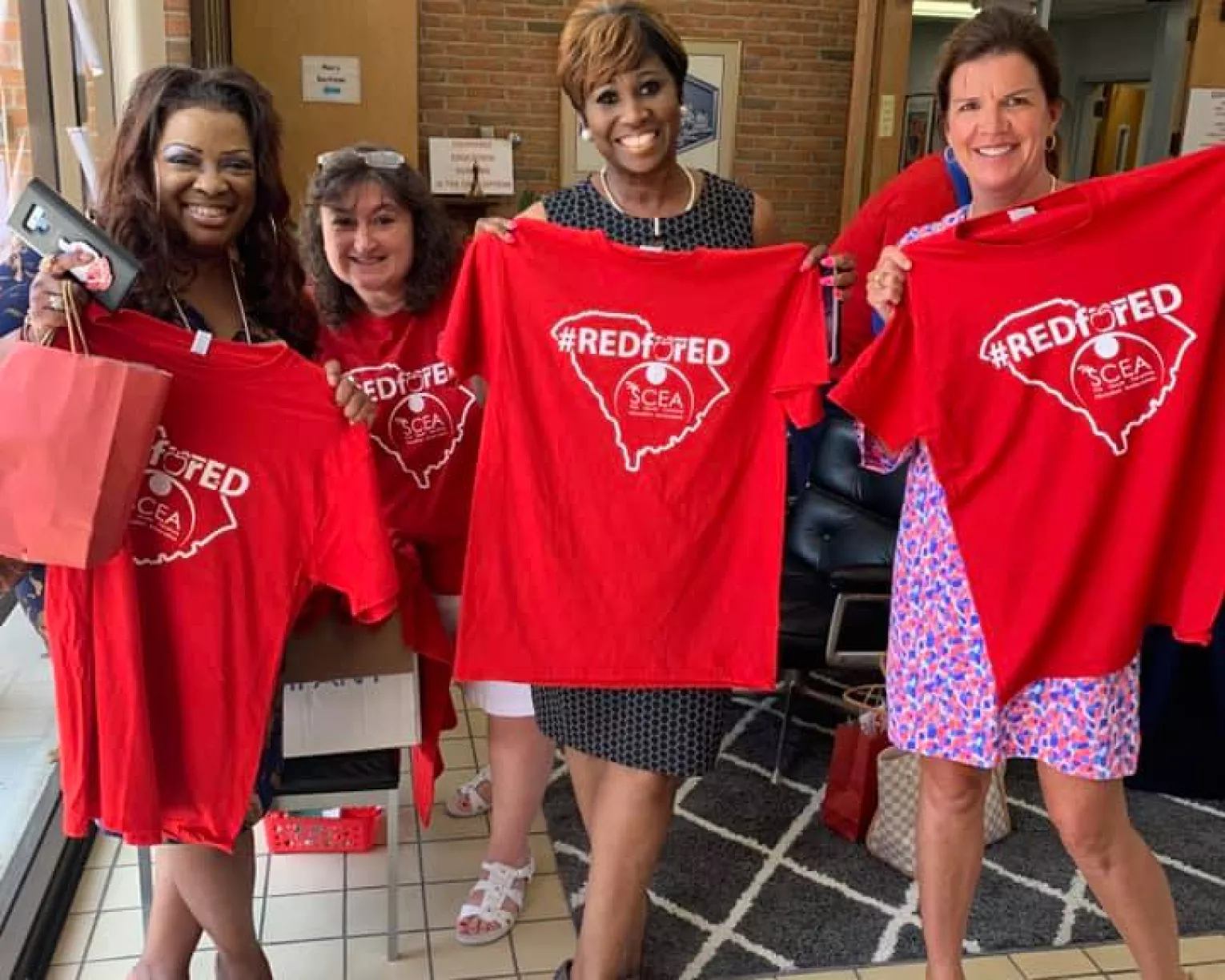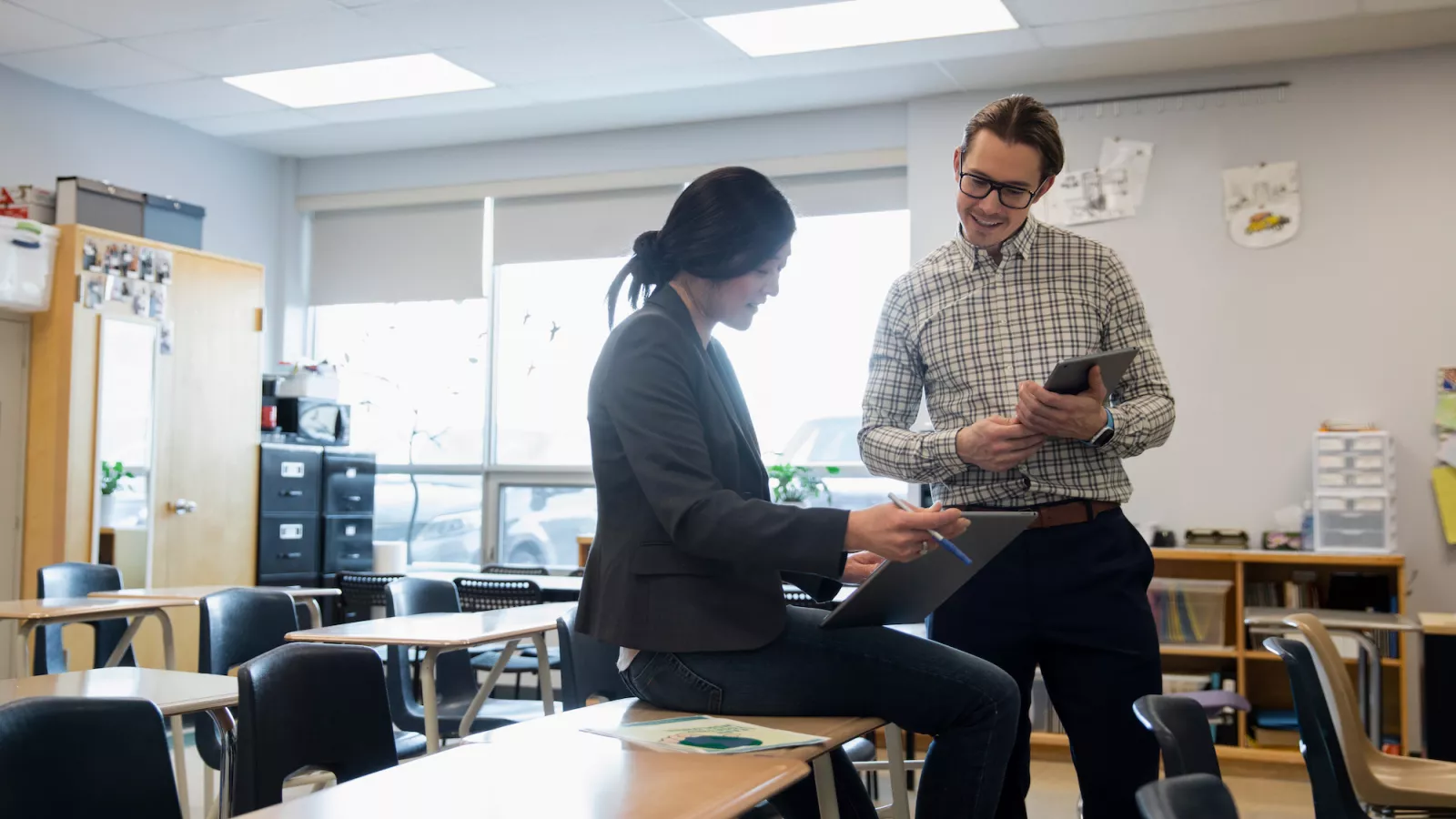Before You Go
Why Visit Worksites
Visiting a worksite is an important way to reach educators, whether it is an initial contact or following up from a previous conversation. A worksite blitz is a concentrated time for organizers to work together with a specific district or work site to reach target potential or current members.
Goals for worksite visits and blitzes can include:
- Recruit Potential Members
- Engage Current Members
- Identify Potential Issues to Organize Around
- Identify Potential Activists
- Identify Potential Leaders
- Update Member and Potential Member Contact Information
The following guide is designed to help you prepare, whether for your next worksite visit or to train leaders for an upcoming blitz.
Before You Go
1. Collaborate with Local Leaders & Staff
Identify which Local Affiliate you want to focus on for your worksite visits and coordinate with local leadership and leaders before conducting a visit.
- Secure Commitment from the Local President and Executive Board
- Meet with State Staff
- Meet with Worksite Leaders
These leaders can alert us to issues that may arise, intel on the relationships with administrators, and special circumstances to be aware of that may facilitate our success. They can also help confirm building or worksite access.
Make sure to get the following information:
- How many members work in this worksite? How many potential members?
- How many potential members work in this worksite?
- Who is/are the worksite leader(s)?
- Has this building been mapped?
- Do you have a worksite roster?
- What is the workday schedule? When are members’ lunches and when are their prep periods?
- What issues are we currently addressing in this local or worksite?
- Have members been notified that we are coming to the worksite?
Need Data Support?
Building strong lists allows organizers to more effectively and efficiently reach educators and protect public schools. Don't let the process of gathering data intimidate you! We've broken down the basics for you in our guide to building strong organizing lists. If you need further support, contact contact NEA at [email protected].
3. Prepare Participants
You will want to host an in-person or virtual training or provide written instruction to help prepare your participants. Here is a sample training agenda:
Overview of local association/community (ideally from Local Association President) Short briefing on state affiliation and statewide issues Orientation to the blitz Goals Tools to achieve goals and membership recruitment techniques If you are conducting a blitz during the day, create a daily schedule based on planning period/break times.
If you are conducting a blitz before and after school, simply create a list of targets (by school, by section of the school, with knowledge gathered from the worksite leader on informal schedules — who comes in early, who stays late, etc.).
For larger districts with multiple buildings, it may be helpful to print a Google map with all the building locations, and identify a few local businesses that are good places to regroup between sessions (nearby, with WiFi and room to spread out).
Make sure to prepare a bag, large envelope, or binder for participants with the following:
- Names and addresses of schools they are visiting (include principal/lead secretary)
- Building maps with room numbers/names
- Worksite leader/Executive Board contact information for each school
- Conversation tracking sheets and daily reporting forms
- Conversation Guide/Script
- Brief background on local association: major issues, challenges, successes, etc.
- Contact information for lead organizer(s) and local presidents
- Membership forms, New Ed cards, commitment cards (volunteer tracking), and brochures about the work and agenda of the local association
- Pens/post-it notes to leave “sorry we missed you!” messages for educators OR pre-printed “sorry we missed you!” cards with contact information for organizers
- Copies membership recruitment materials
- Pens
- Clipboards
Don’t forget to:
- Secure union (or union-funded) release time for local leaders to participate in the blitz or worksite visit.
- Secure building access and obtain confirmation from district administration, including building principals.
- Ensure communications are sent to building principals, secretaries, and targeted employees.
At the Worksite
During the Worksite Visit
1. Arrive at a Worksite
We want to be as respectful as possible as we enter the worksite. Use this list to ensure you make the best first impression:
- Make sure you have parked in a school visitor parking space.
- Show ID upon arrival. Sign in with the front desk and introduce yourself to the front office staff. Identify yourself as being with the union.
- Consider providing a small gift or thank you note for the front office staff to show appreciation for their assistance.
- Ask the front office for an updated worksite roster, schedule of lunch periods and preps, and a building map.
- Ask the front office which members are out of school that day.
- If appropriate, ask if you can introduce yourself to the principal or administrator.
- Ask if and where there is a union bulletin board. Visit the bulletin board to see how recently it has been updated. If it hasn’t been updated in a while, make a note to discuss this with the local president.
The Best Strategy for Your Schedule
- Try to schedule visits in advance of your arrival.
- Introduce yourself and let the member know where you will be when you aren’t conducting the scheduled one-on-one conversation. Invite the member to come visit you.
- If the member is busy and can’t talk at all, leave a note in the member’s mailbox letting them know you came by to speak with them about the union. Leave your contact information.
- Set yourself up in the location where most targets eat.
- Make sure you have a sign-in sheet that collects member and potential member contact information, including cell phone number and personal email address.
- Introduce yourself using one-on-one conversation best practices.
2. Have Impactful One-On-One and Group Conversations
Now we have arrived at the most important part of your worksite visit! These organizing conversations are the cornerstone of our work.
Conversation Best Practices
- Get their name, what they do at the school, and ask if they are a member (reference walk list).
- Share information regarding association priorities as they relate to the Local and the specific worksite.
- Ask open-ended questions to get the member/potential member’s story.
- Ask the member/potential member to do something (sign a petition, fill out a postcard, sign a membership form, contribute to the PAC, etc.).
- Identify potential issues to organize around.
- Identify whether the member/potential member is an activist, leader, etc.
- Do not third-party the union: The union is not a separate entity. The members are the union. Our union must be healthy, strong, and ready to win. This happens when members own their union.
Find talking points and more best practices in our Guide to Transformational Conversations.
3. Wrap Up and Say Goodbye
Make sure you end your worksite visit properly! Follow these tips:
- Collect all the materials you’ve put out that are not to be left behind.
- Clean up any food you may have brought with you. Remember, the custodial staff are our members, potential members, or another union’s members. We must ensure we aren’t creating additional work for them.
- Stop by the front office and sign out to ensure there is documentation of your departure.
- Thank the front office staff for their assistance.
- Say goodbye to the principal or administrator. If it’s a friendly relationship, thank them for their support for our members.
- Plan your post-worksite visit debrief.
After the Visit
After Your Worksite Visit
The Post-Blitz Debrief
Ensure you learn from your event and continue the momentum by scheduling time to share follow ups, lessons learned, and tips for the next worksite visit.
Debrief with Organizers
- Determine a time and place, and secure commitments from organizers before the blitz begins
- Ask for feedback and suggestions
Debrief with the Local
- Include local UniServ staff and officers
- Share results and plan next steps
- It is best to block off several days to a week after the blitz for compiling data and follow-up planning with the Local.
Remember: Blitzes may be most effective as a jumpstart to a longer campaign. Think about ways to tie this visit into your larger organizing plans.
Other Considerations
- Be prepared to shift and change the schedule; you may have more or fewer conversations than anticipated.
- Be prepared to consider home visits or other ways of contacting your targets.
- Never use the students’ restrooms. ALWAYS ask to use the faculty restroom.
- Do not take photos without members’ permission. NEVER take photos of students.
- Do not park in a faculty parking space. Often, there is limited parking and we do not want to take parking spaces reserved for our members and potential members.
- Do not park in front of the school unless designated for school visitors.
More Organizing Tools and Resources

Let's Talk About Series

Year-Round Organizing Framework

NEA's Guides to Organizing
Speak Up For Students and Public Schools

